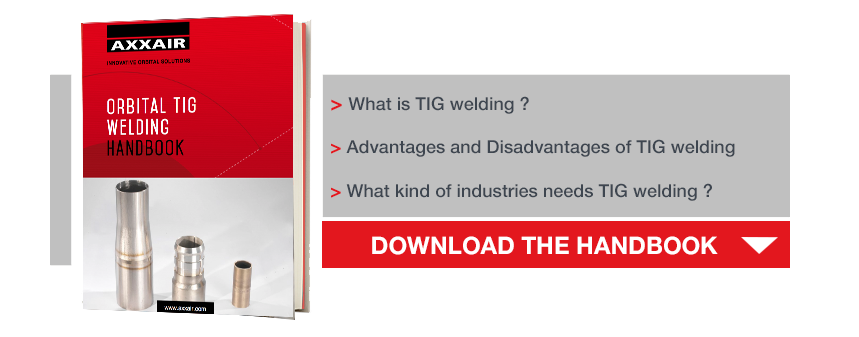High purity welding is not always sufficient to meet the requirements of clean rooms. Depending on the industrial sector, the standards vary according to the particles allowed in production. Sectors that are restricted by these regulations are amongst others the industries of food and beverage, biochemistry, pharmaceutics and semiconductors.
Welding in clean rooms
When speaking of clean rooms, people’s minds automatically go to operating rooms in hospitals – which is not wrong! The conditions for industrial manufacturing in clean rooms are based on the main principles of these sterile environments.
#1 Quality and preparation of the tubes
Before anything else, your top priority needs to be the perfect preparation of the tubes. In most cases, the industry relies on electro-polished, stainless steel tubes type 316L. Without question, the tubes need to be of impeccable condition, which means no scratches, no dirt and no other defects that might make them unsuitable for clean rooms.
#2 Electropolishing
Electropolishing is an electrochemical surface treatment process where the metal in the surface layer is removed through anodic dissolution. With this treatment, contamination can be limited to a minimum. Iron and nickel atoms are easier to remove from the crystalline grid than chromium atoms. Electropolishing therefore removes the nickel and the iron, while leaving a chromium-rich surface, which accelerates and improves the passivation of the surfaces.
It goes without saying that during the preparation of the tubes, any action that would cause metal shavings should be avoided in order to prevent any scratches. AXXAIR provides you with machines for orbital squaring that comply with all these conditions and leave a burr-free tube surface.
#3 Workshop equipment
Needless to say, a perfect weld is not enough to be approved for the use in a clean room. The entire work environment must be free of dust and microbes, the operator needs to be equipped properly to avoid any contamination and the air needs to be filtered and exchanged constantly.
Legal requirements
#1 Strict standards
First of all, reference should be made to the applicable standards. Four types of clean room categories exist, defined in 1981 by the United States.
ISO 14644-1:2015 Cleanrooms and associated controlled environments — Part 1: Classification of air cleanliness by particle concentration.
ISO 14644-2:2015 Cleanrooms and associated controlled environments — Part 2: Monitoring to provide evidence of cleanroom performance related to air cleanliness by particle concentration
These standards provide the framework for classifying and monitoring the cleanliness of clean room environments.
#2 A big step that is well worth it
The financial investment as well as the energy bill are factors that are not to be neglected. Depending on the clean room and its classification, said investment can easily range from 7,000 to 300,000 euros per square meter. But when you take into account that the semiconductor market is growing by more than 7% a year, it's well worth looking into it.
#3 Full traceability
It goes without saying that full traceability of welding procedures in clean rooms is more important than ever. Batch number, welding current and welding speed: everything is monitored closely.
With our orbital TIG welding machines, you can perform welds of perfect condition that are fully documented and can be repeated as often as you’d like without cutting back quality.



